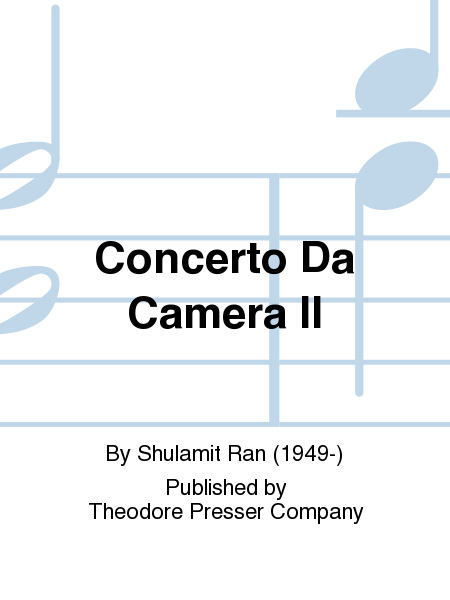Concerto Da Camera II
-
Ships in 2 to 3 weeks
Details
Description
SKU: PR.11440558S
Composed by Shulamit Ran. Score. With Standard notation. 45 pages. Duration 17 minutes. Theodore Presser Company #114-40558S. Published by Theodore Presser Company (PR.11440558S).UPC: 680160008971.
Concerto da Camera II is a work for six instruments which may be further grouped into three separate entities - clarinet, string quartet, piano. In this combination, chosen by the work's commissioning organizations (the Chamber Music Society of Lincoln Center in conjunction with Mount Holyoke College), lies the work's first challenge. While pairings of any two of these three sound types abound in the concert literature, the three together form a far less common soundscape. The main difficulty appears in the necessity to reconcile the potential of both the clarinet and the piano of acting in a soloistic capacity when pitted against the string quartet. Indeed, the three movements of the Concerto deal with this problem in various ways, with the balance of power between the six instruments' potential for unity and contrast, solo and ensemble playing, continually shifting and changing. Yet another, more delicate, balance of power is at play here, namely, the relationship between the external, foreground level of the piece and a subtler background level. What, at first, appear like small, gentle melodic strands, mere echoes or residues of the main events, gradually assume an inner life of their own. Never actually taking over yet always there, a salient, if quiet, factor within the work's compositional fabric and evolving organism. Though each movement includes numerous tempo fluctuations, the overall thrust of the work clearly suggests a fast-slow-fast framework, with the last movement being a loosely structured, occasionally tempestuous Rondo.

 Share
Share